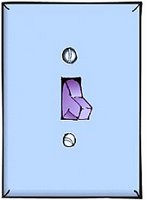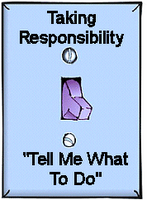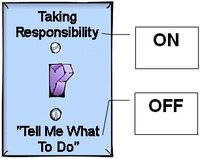
This TeacherLeader article focuses on the following two dispositions:
B. Self-Management Domain:
4. Achievement.Teacher leaders with strength in achievement have high personal standards that drive them to constantly seek performance improvements—both for themselves and for their students. They are pragmatic, setting measurable but challenging goals, and are able to calculate risk so that their goals are worthy but attainable. A hallmark of achievement is in continually learning—and teaching— ways to do better.
5. Initiative. Teacher leaders who have a sense of efficacy—that they have what it takes to control their own destiny—excel ininitiative. They seize opportunities—or create them— rather than simply waiting. Such a teacher leader does not hesitate to cut through red tape, or even bend the rules, when necessary to create better possibilities for the future.
The Passive Student
How long have you been going to school? Fourteen years? Fifteen? More? There’s little doubt that you’ve spent a significant portion of your life in school. I’d bet you have been enriched in many ways because of your school experiences. You’ve gained knowledge, skills, and appreciations you could not have easily acquired any other way. You’ve been exposed to role models, many of whom impacted you in a very positive way. You discovered things about yourself and others that were critical for your success as an adult. However, you may have also picked up a very bad habit.
If you’ve allowed yourself, no matter how unintentionally, to fall into the role of a passive student, then your master switch is set to the “OFF” position. Here’s how students talk when the switch is in the “OFF” position:
“Do we have to?”
“Will this be on the test?”
“Will this be graded?”
“What if I don’t get it all done?”
“It’s too haaaaaarrrdddd!”
The Student Teacher
But now you find yourself (or will very soon) in the unique position of being BETWEEN student and teacher. In fact, maybe you’ve noticed that your capstone experience is called STUDENT TEACHER!
You might start with the master switch in the “OFF” position, but you can rest assured that by the end, during student teaching (and actually during Junior Experience), the switch has to be flipped to the “ON” position.
Switched OFF or Switched ON!
Take a look at the switch again:

The switch above is in the “OFF” position. Borrowing language from the dispositions at the beginning of this article, the “OFF” position is:
“NOT seeking performance improvements—both for themselves and for their students” (NOT Achievement), and
“NOT seizing opportunities—or creating them— but rather simply waiting” (NOT initiative)
Cooperating Teachers and University Supervisors are master electricians who can quickly tell which way your switch is thrown.
Is it “ON” and you are thinking and working hard to improve your own performance and that of your students? Is it “ON” and you are aggressively looking for opportunities for student learning? Do you CREATE teachable moments through your curriculum, creative teaching strategies, knowing each of your students, and deep and consistent reflection about teaching and learning? Is your goal to master your professional knowledge, skills and dispostions? Or is your switch “OFF,” waiting for perfect conditions for everything to work out all right—somehow. Are you blaming your Cooperating Teacher, the school, the kids, the weather, and who knows what? Are you trying to do the minimum required to get by and get certified? If so, your switch is probably set to “OFF.”
Good News!
Good news! You are the one who determines which position the switch is in. You can flip it to on and . . .
BECOME A TEACHER LEADER—ONE WHO TAKES
RESPONSIBILITY FOR STUDENT LEARNING.


0 Comments:
Post a Comment
<< Home